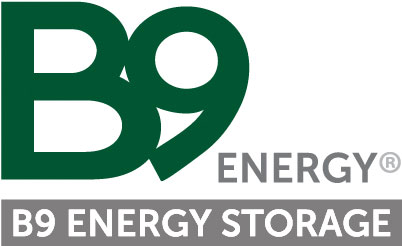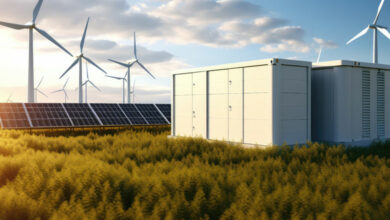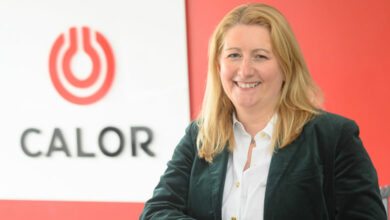Power-to-X and e-fuel synthesis
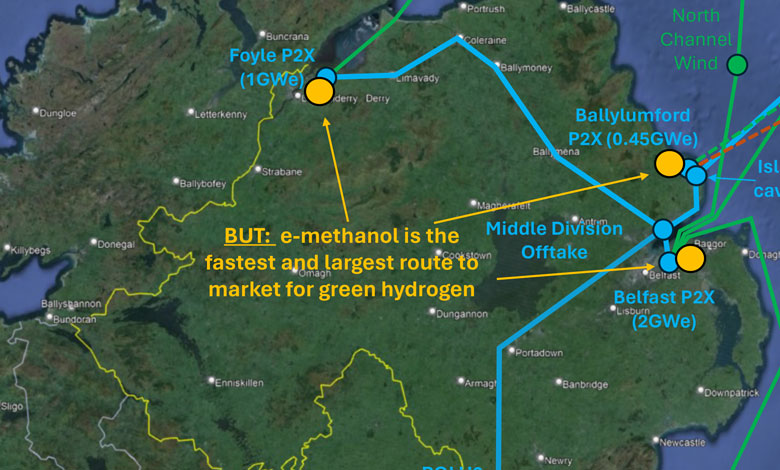
Managing Director of B9 Energy Storage Ltd, David Surplus, outlines the opportunities of using the maritime e-methanol market to fast-track deployment of large-scale offshore wind.
It is important to mention that B9 Energy always supports direct electrification whenever possible because it is the most efficient route to decarbonisation. However, when industry sectors, such as marine transport need liquid fuel alternatives, then Power-to-X and e-fuel synthesis become a priority.
Ulster Hydrogen Valley
Decarbonising the Northern Ireland economy by 2050 will require the deployment of large-scale offshore wind farms. These will be additional to the existing onshore capacity and have both geographical and hourly correlation to the electrical loads being supplied.
The existing electrical grid network is not capable, in the time and budgets available, of transporting such large amounts of power on its own but assistance can be provided by Power-to-X systems to allow crossover of hydrogen into gas networks.
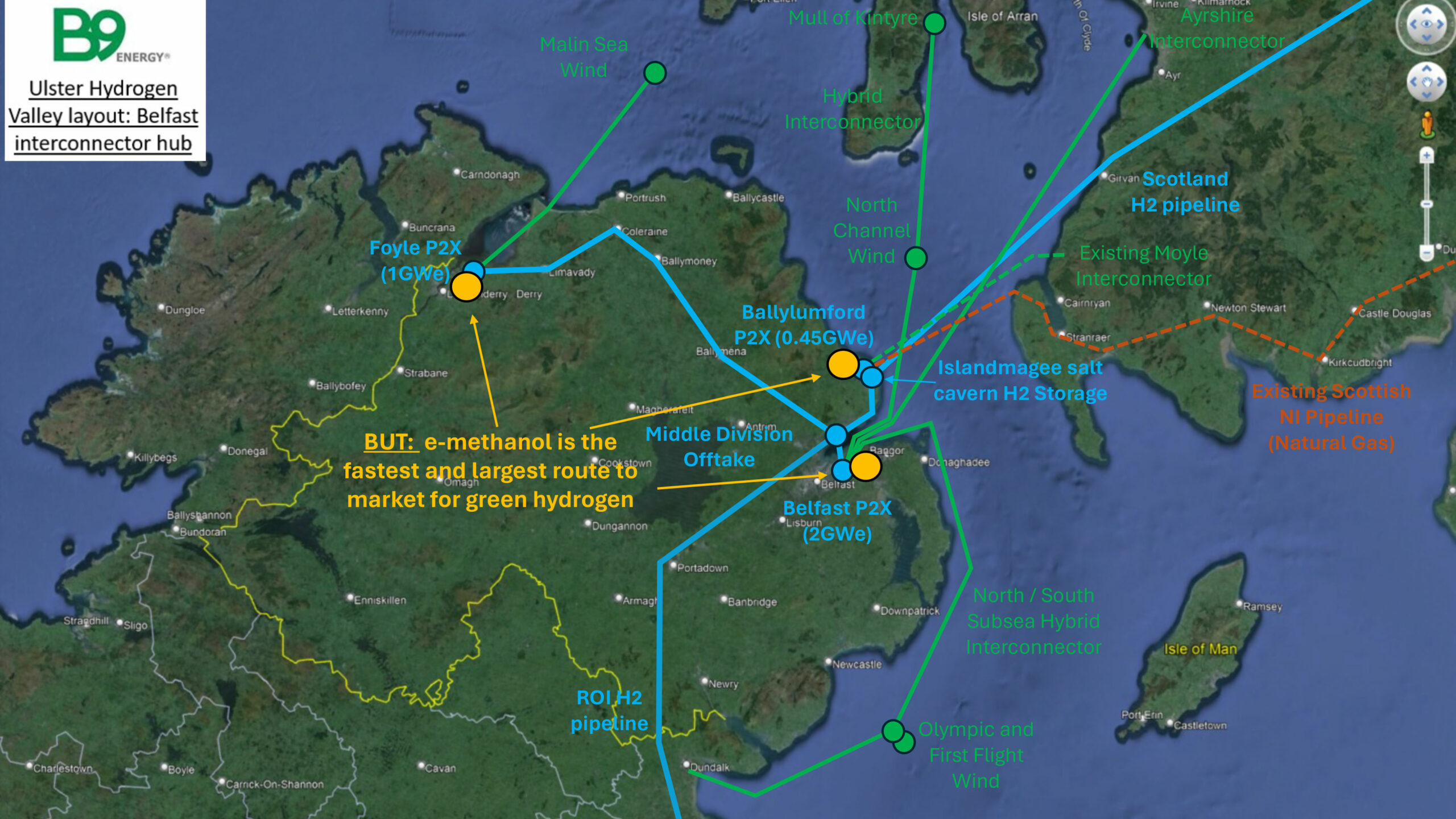
The infrastructure map (figure 1) shows offshore wind, Power-to-X (P2X) electrolyser stations, dedicated sub-sea cables and pure hydrogen pipelines. It also shows the location of the proposed 500 million m3 salt cavern storage facility at Ballylumford, Islandmagee, which can store green hydrogen. The total system shown is 3.45GWe capacity, requires €9 billion CAPEX from private investors and is called ‘Ulster Hydrogen Valley’ 1
Routes to market for H2 gas include blending into natural gas pipelines and delivery to existing power stations to provide future security of supply during periods of low wind. Unfortunately, slow policy development in these areas means there is insufficient legislation or regulations to support the ambitious project development needed to solve the climate emergency.
A faster and larger route to market for green hydrogen is offered through the development of an e-methanol economy, particularly as it relates to the fast-growing maritime fuel sector. Note that methanol is a chemical fusion of hydrogen and CO2.
NI/GB Green Shipping Corridor Project:
B9 Energy Storage together with partners: DFDS Seaways, DFDS Logistics, Larne Harbour, JG Maritime Consultants, Mutual Energy and the Net Zero Industry Innovation Centre at Teesside University are being funded by Innovate UK and Department of Transport through the Clean Maritime Demonstration Competition round 4 (CMDC4) to carry out feasibility studies and pre-deployment trials in respect of a ‘NI/GB Green Shipping Corridor’ between Larne in Northern Ireland and the north west of England (preferably Liverpool) using a ro-ro freight ferry design optimised for the carriage of unaccompanied trailers and powered by hydrogen reformed onboard from green methanol delivered in road mobile ISO tank containers.
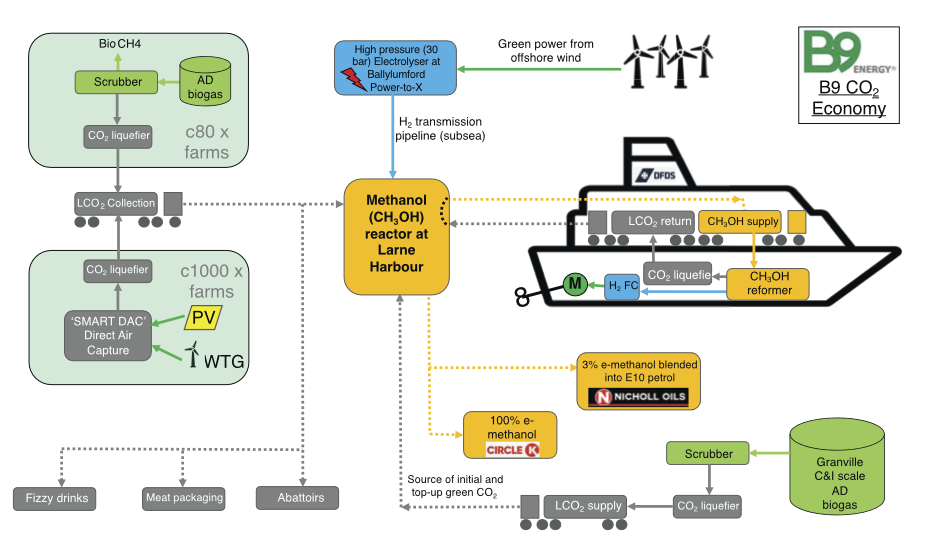
The green methanol would be synthesised at Larne Harbour from green H2 and CO2 as an extension of the Ballylumford Power-to-X Project. The main innovation in the project is to capture CO2 from the onboard reformer and return it to the methanol synthesis plant in the same (now empty) tank containers that delivered the methanol, thereby setting up a circular CO2 economy that avoids the inevitable future supply constraint of green CO2.
The port based flexible green methanol plant will use otherwise curtailed wind power to drive a PEM and/or Alkaline electrolyser that feeds green hydrogen to a catalytic reactor. The Domestic Green Shipping Corridor would have ‘true-zero’ emissions, would not be reliant upon limited supplies of bio derived CO2 or direct air captured CO2 and would not need any carbon offsetting to meet net zero objectives.
The system diagram of Figure 2 relates to the recirculation of CO2 to enable scale-up of e-methanol as a marine fuel. It also shows the ‘linear’ application of captured green CO2 from biogenic sources (anaerobic digestion) and direct air capture (DAC) from the atmosphere to serve the linear end uses of e-methanol, such as blending into E10 specification petrol, selling as pure methanol (M100) for spark ignition engine powered vehicles and for subsequent synthesis into Dimethyl Ether (DME), which is a substitute for LPG, and e-kerosene, which is a sustainable aircraft fuel. These linear CO2 applications end up with CO2 being vented to atmosphere and so they can deliver carbon neutral performance.
Direct air capture for supply of ‘linear CO2’
B9 Energy storage is hosting a DESNZ funded DAC demonstration project at its HQ office in Larne. The unit has been designed by CO2CirculAir for intermittent operation using wind power without the need for energy storage or forced draft fans. Deployment of DAC machines driven by off-grid single wind turbines, ranging in size from 250kW to 1MW, can usefully be carried out at up to circa 1,000 different farm locations in Northern Ireland.
Wind can be augmented with low-cost ground mounted solar PV arrays. In many cases these sites already have planning permission for wind turbines but no cost-effective grid connection offer. Collection of the liquid CO2 would use similar logistics operations to bulk milk collections and animal feed deliveries. The DAC sourced CO2 is pure enough to be used in the food and drink sector.
There are several turnkey suppliers of methanol plants that have specifically designed for variable inputs of green hydrogen from renewable energy driven electrolyser installations. An example is ‘FlexMethanol’ from BSE Engineering which claims flexible operation in the range 10 per cent to 120 per cent in less than 15 seconds. Use of such a flexible system would remove the need for large scale hydrogen compression and storage, which are expensive operations.
1. https://h2v.eu/hydrogen-valleys/ulster-hydrogen-valley
2. https://www.shippax.com/en/news/green-methanol-on-track-to-become-a-scalable-zero-emission-fuel-in-the-maritime-sector.aspx
David Surplus
Managing Director
B9 Energy Storage Ltd
E: d.surplus@b9energy.co.uk
W: www.b9energystorage.co.uk

